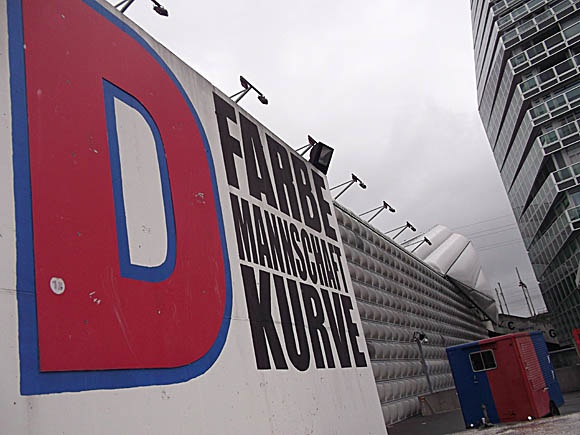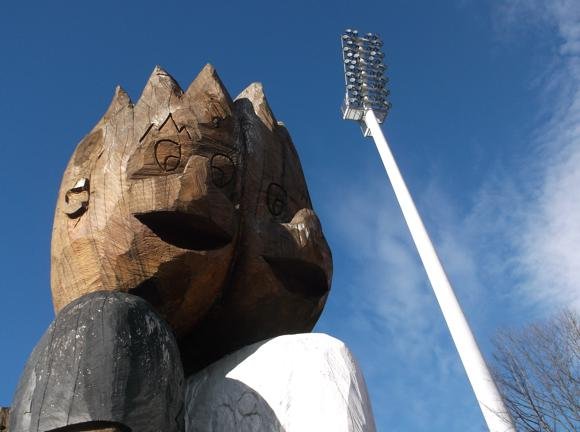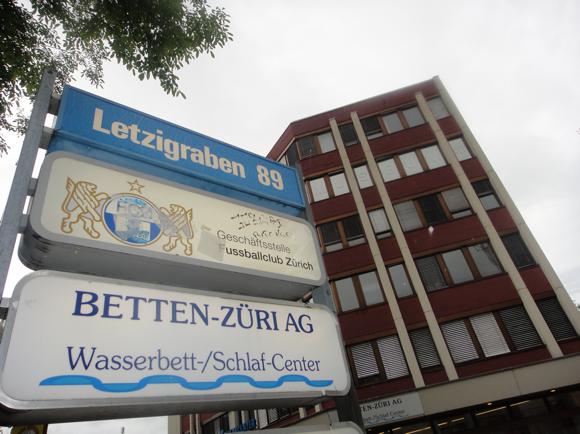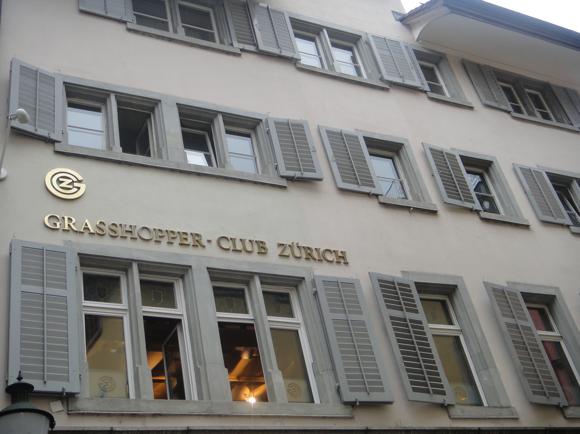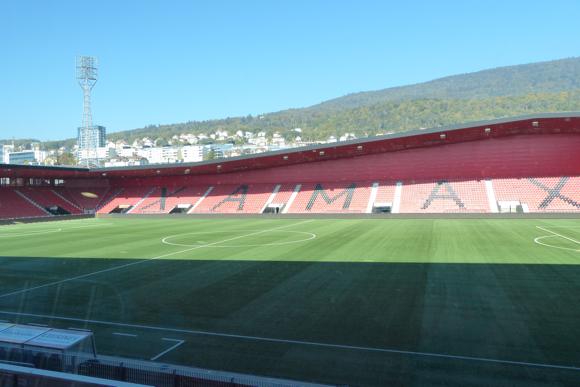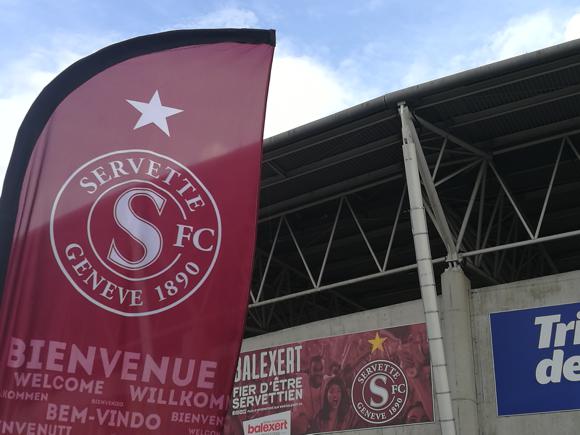A fan’s guide – the club from early doors to today
The flagship club of the Swiss capital, Young Boys, perennial top-three finishers in the league, broke their 32-year title duck with a runaway win in 2018. A year later, the Gäub-Schwarz did it again, and again by a country mile. As of 2024, the Super League crown has only left Berne once since that initial breakthrough six years before.
The club was founded in 1898 by students from Berne University, inspired by Basel’s Old Boys, also in yellow and black. Young Boys beat local rivals FC Bern on their way to the title in 1903, club founders Max and Oscar Schwab in the team.
Moving pitches from beneath Kirchenfeld Bridge to Spitalacker-Platz, YB (‘Eeh-Bay’) won three titles on the trot, then engaged coach Reynold Williams in 1913. The Englishman was replaced by his compatriot, Jimmy Hogan, at the end of World War I.

YB duly won a fourth title in 1920, increasing success and rivalry with FC Bern encouraging the construction of a suitable stadium. Set in the outskirts, the Wankdorf was an impressive stage for the Yellow-and-Blacks to win league and cup in swift succession in 1929 and 1930.
After the war, German coach Albert Sing arrived to lead a side that featured goalkeeper Walter Eich and striker Eugen Meier. Both made the Swiss squad for the 1954 World Cup, for which the Wankdorf was expanded to 60,000 capacity.
Three years later, YB won their first of four consecutive championships, Eich and Meier the stars. This side also made the semi-final of the European Cup in 1959, beating Stade de Reims at the Wankdorf with a Meier goal. A second-half rally in Paris saw the French club reach the final.
After Sing left in 1964, YB didn’t make Europe again for over a decade. Eich himself took over as coach in 1983, but it was his successor, Pole Aleksander Mandziara, who brought the championship back to the Wankdorf. With Swedish international Robert Prytz and Danish striker Lars Lunde, Young Boys beat Xamax to the 1986 title with a famous win in Neuchâtel.
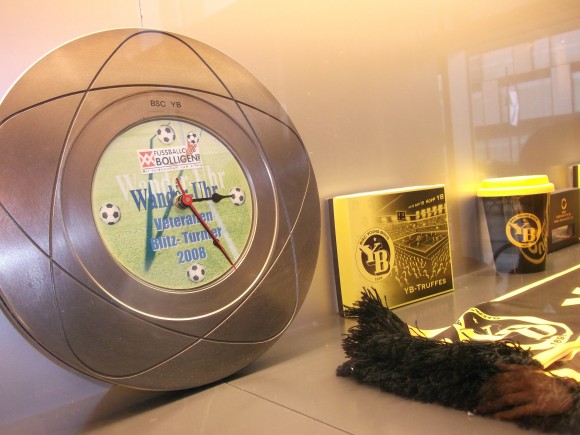
European campaigns were ended by Real Madrid and Ajax respectively. In 1993, an extra-time own goal by André Baumann was all that stood between Young Boys and Celtic in the UEFA Cup.
Relegation and near bankruptcy clouded the rest of the decade, the worst in YB’s history.
The club bade farewell to the Wankdorf and moved to FC Bern’s Neufeld while the Stade de Suisse was being built. A gradual recovery saw the club back in the top flight and, shortly, Europe, thanks to goals from Swiss legends Stéphane Chapuisat and Hakan Yakin.
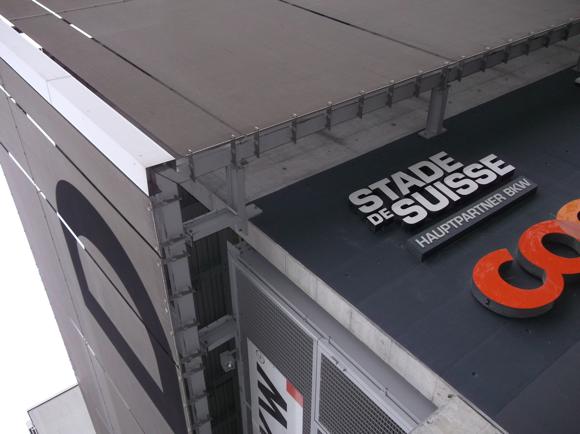
Attracting Switzerland’s second biggest crowds after FC Basel, YB put in credible title challenges, and embarked on two qualifying campaigns in the Champions League. In 2010 play-off round, leading Spurs 3-0 on the half-hour at the Stade de Suisse, YB buckled, conceded two goals and then folded at White Hart Lane.
Stints in the Europa League then saw a draw with Liverpool and wins over Napoli and Udinese. Former French internationals Guillaume Hoarau and Yoric Ravet scored the goals and provided the chances that led to further European qualification in 2017.
Though falling to CSKA Moscow at the play-off stage in the Champions League, and performing poorly against further Eastern European opposition in the Europa League, Young Boys kicked on from a lively start to the domestic campaign to win the league 2017-18.
A long-sought league title was achieved thanks to the continuing goalscoring form of Cameroon international Jean-Pierre Nsame, a savvy buy from Servette, and renaissance of Réunion-born Guillaume Hoarau, a veteran striker. The other key factor was Serbian wide player Miralem Sulejmani, also a title-winner with Ajax and Benfica.

YB then lost Austrian coach Adi Hütter to Eintracht Frankfurt, but former Grasshoppers midfielder Gerardo Seoane stepped in to take Berne to a first-ever qualification for the Champions League. Two goals in two minutes by Hoarau in Zagreb sank Dinamo after YB had only taken a 1-1 draw to Croatia in the play-off round. Juventus, Manchester United and Valencia proved too much in the group stage, although a 2-1 win over Juve in the last, dead-rubber match, pleased a near full house at the Stade de Suisse.
Hoarau and Nsame scored 30 goals between them as Seoane’s Young Boys walked to another title in 2019, even pipping the previously invincible FC Basel in terms of average gates, something that would have been unthinkable even three seasons previously. Losing out to Red Star Belgrade in the Champions League play-off round – the Swiss champions no longer enter the group stage automatically – YB landed a tricky Europa League group consisting of Porto, Feyenoord and Rangers.
Making through the group stage the following year, Young Boys surprised Bayer Leverkusen in the knock-out round thanks to a stellar performance from Christian Fassnacht, whose goals would help keep his side unbeaten in the league for 21 games straight. Although brushed aside by Ajax in the next round, YB lifted a fourth consecutive league title that April.
With Nsame injured for much of 2021-22, then loaned to Venezia, Berne struggled but bounced back under former Swiss international midfielder Raphaël Wicky. His team led the table from start to finish, despite the disappointment of a defeat on penalties to Anderlecht in the Conference League. A near capacity crowd of 31,500 witnessed YB do the double, a brace from a resurgent Nsame setting up a tight 3-2 win over Lugano in the Swiss Cup final.
Stadium Guide
The field of dreams – and the story behind it
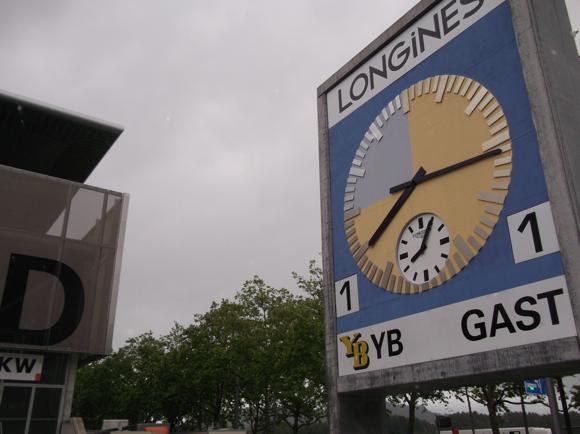


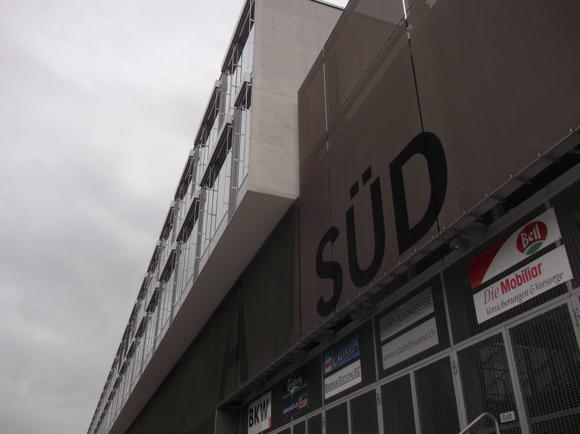


Regular venue for the Swiss cup final, the Stade de Suisse is a high-tech rebuild of the legendary Wankdorf that once stood here.
Built in seven months in 1925, the then 22,000-capacity Wankdorf, named after the surrounding area in north-east Berne, was expanded to 42,000 by the 1940s.
In 1946, Switzerland was chosen as host of the 1954 World Cup. Architects Virgilio Muzzulini and Walter Haemmig redesigned a 64,000-capacity Wankdorf, worthy of staging a World Cup final. Ominously, for the stadium’s curtain-raiser that Whit Monday, the great Hungary side came and beat Young Boys 9-0.
A few weeks later, Hungary were back, but in sadder circumstances. First came the notorious Battle of Berne, a brutal quarter-final with Brazil in which fighting between players and officials carried on from the pitch to the changing rooms. Then, on final day, July 4, the Hungarian team could barely get through the crowds to reach the ground. Leading West Germany by two goals after eight minutes, Hungary conceded two back and fell to a late strike by Helmut Rahn.

It was one of the biggest upsets in football history. When the Wankdorf was closed in 2001, Swiss watchmakers Longines renovated the famous clock from the occasion to stand outside the new Stade de Suisse when it opened.
Built for Euro 2008, the stadium opened in 2005, a roof of energy-generating solar panels covering an artificial pitch and 32,000 seats. Tickets are sold for all but one of them – a red seat of honour is reserved for a Young Boys legend, the first guest being former star goalkeeper Walter Eich.
Home fans gather behind the goal on Papiermühlestraße, the Ostkurve, even-numbered sectors D2-D14 standing. Away fans are allocated B12-B15 in a corner of the opposite end. The best seats and boxes are accessed through Quartierplatz, the pedestrianised square containing the Restaurant Eleven.
getting here
Going to the stadium – tips and timings

Bern Wankdorf S-Bahn stop is right by the stadium, 5min from Bern main station on lines S1, S2, S3, S31 and S44. There’s usually one leaving every 5-10mins.
Alternatively, tram 9 leaves every 5-10mins from outside the station (eight stops, 10mins), through the main square of Zytglogge (6 stops, 7mins).
getting in
Buying tickets – when, where, how and how much
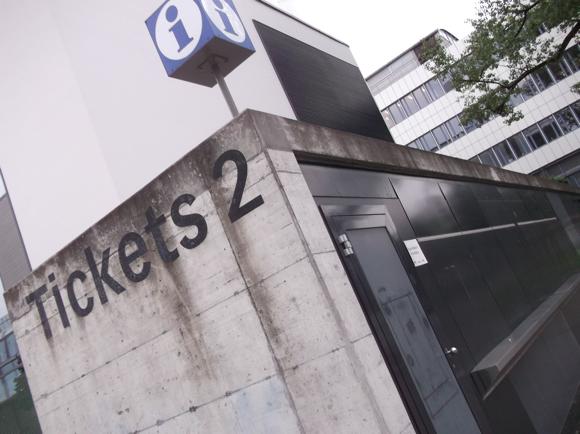
There are two advance ticket outlets at the stadium. The Ticketing office (Mon-Fri 8am-noon, 1pm-5pm) is at Papiermühlestraße 71 (third floor) and also deals with orders by email (ticket@bscyb.ch) up to 14 days before the game. Secondly, there’s the YB-Fanshop (Mon-Fri noon-6.30pm, Sat 9am-5pm) in the Wankdorf Center, Papiermühlestraße 85. On match days, ticket distribution stops here from 2hrs before kick-off.
At Berne main station, the package pick-up desk (Collect-Lounge) at Welle7 commercial centre (Schanzenstraße 5, Mon-Fri 8am-8pm, Sat 8am-5pm) also distributes tickets.
Online sales are dealt with by Eventim and TicketCorner, which also has outlets at BLS Reisezentrum offices, such as at Genfergasse 11 near the station.
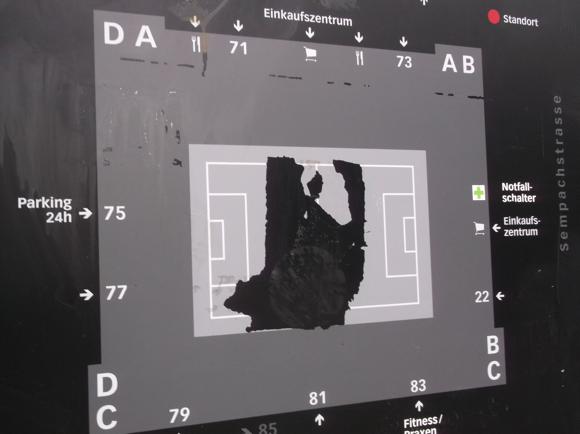
On match days, kiosks on three corners of the stadium open 90mins before kick-off. Kassenhaus 1 on Papiermühlestraße and Kassenhaus 3 on Sempachstraße close 15min before kick-off. Kassenhaus 2 on the corner of Quartierplatz and Sempachstraße stays open until 70min into the game.
Prices start at SF25 to stand in the home end, Tribüne D sectors, and SF35 to sit there – places usually very limited. In Tribüne B behind the opposite goal, it’s SF35, SF25 in the non-smoking family corner and for away fans in the Gästesektor, B13 and B15.
Along the sidelines in Tribüne A or C, prices run from SF45 to SF70 for prime seats.
Visitors aged between 16 and 26 get a 20% discount, those under 16 50% and it’s free for under-6s. Seniors (over-64 women, over-65) also have a 20% discount.
what to buy
Shirts, kits, merchandise and gifts

The main outlet for yellow-and-black YB merchandise is the YB-Fanshop (Mon-Fri noon-6.30pm, Sat 9am-noon, 1pm-5pm, match days) at the Wankdorf Center, Papiermühlestraße 85.
Among the Gäub-Schwarz paraphernalia, you’ll find sink plugs, mouse mats, bath towels, and T-shirts bearing the proud foundation date of 1898, as well as replica and second-choice shirts in yellow and black.
club Museum
Explore the club inside and out

A modest YB-Museum (SF5/SF2 6-16s) open Saturday match days from 2pm to 4pm, accessed through the Marathon Gate on Papiermühlestraße. Early trophies, pennants from European campaigns and a video of the last trophy win of 1986 are on display.
Where to Drink
Pre-match beers for fans and casual visitors
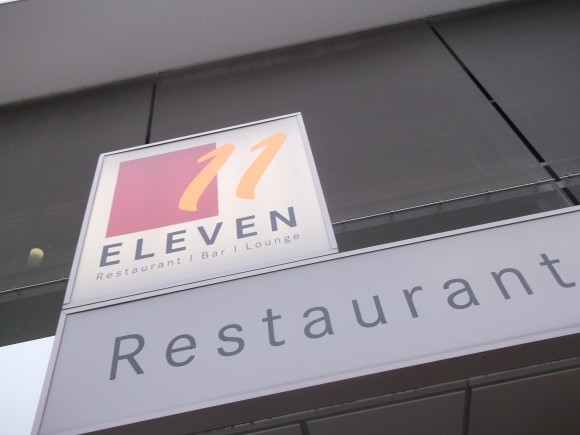

Since the sad closure of the wonderful Walter, there is now one restaurant at the stadium on Quartierplatz: Eleven (Mon-Fri 8.30am-11pm, Sat 5pm-11pm, Sun match days only). Quality Italian food, live match screenings and YB souvenirs await in a neat interior.
A terrace spreads out across this pedestrianised square on the west side of the stadium.



